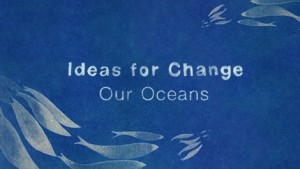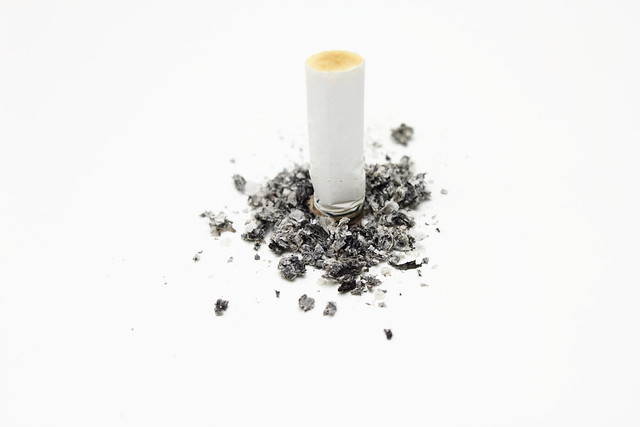Make a promise, help save the oceans
 What can you promise yourself that will in some way help protect the world’s oceans? That’s the question today, on World Oceans Day. It’s an event meant to honor what is one of the world’s main protein sources – the oceans. We definitely need to save our ‘blue gold’. In 2011 alone, 131 million tons of fish ended up on dinner plates worldwide.
What can you promise yourself that will in some way help protect the world’s oceans? That’s the question today, on World Oceans Day. It’s an event meant to honor what is one of the world’s main protein sources – the oceans. We definitely need to save our ‘blue gold’. In 2011 alone, 131 million tons of fish ended up on dinner plates worldwide.
To celebrate this year’s event, the World Economic Forum (WEF) has released a short animated film narrated by American oceanographer Sylvia Earle. “The world is blue,“ she says. The message is clear – all of us need to take better care of the world’s oceans and stop using them as dumping grounds for garbage. We also need to stop overfishing them and drilling into the ocean floor in the hunt for oil.
If you want to get a glimpse at what the future of the world’s oceans might look like, the WEF has also released an infographic. It’s definitely worth a click.
World Oceans Day had been unofficially celebrated since 1992 and was officially recognized by the United Nations in 2008. Ever since, the day has a special theme each year. This year, the event’s organizers want you to make a promise to change one thing in your lives that will help protect the ocean. The idea is to upload a photo of the promise to social media plattforms – make sure you mention #WorldOceansDay.
Food for thought on World Environment Day

Photo credit: CC BY 2.0: chichacha/flickr.com http://bit.ly/14vPiAs
Today is World Environment Day and this year’s event is focused on cutting the world’s staggering amount of food waste. “Think. Eat. Save. Reduce your Foodprint“ is the motto of the global event which is being marked by marches, awareness-raising campaigns, talks, marathons and other events around the globe.
And the statistics published by the United Nations might just give you food for thought. According to the UN Food and Agricultural Organization (FAO), an estimated one third, or 1.3 billion tons, of all food produced worldwide ends up in the trash. Farmers, transporters, retailers and consumers alike are to blame for the waste.
The FAO says this isn’t just a colossal waste of food but also a squandering of natural resources used along the production and supply chain process. The FAO is urging people to be more aware of the decisions they make regarding food consumption.
And if that isn’t enough to make you pause and think, consider this – the FAO says that to produce one single hamburger, 16,000 liters of water are used.
And here’s another chilling fact for all the meat-lovers out there – the FAO estimates that producing one kilogram of meat is far worse for the environment than a 250-kilometer-long car drive. That takes into account the massive cost of feeding animals. It’s estimated that up to 35 percent of grain harvests around the world and 80 percent of soya harvests are used as animal feed.
At the same time, 870 million people around the world go hungry every day.
Quitting fossil fuel could be the hardest plan ever
Quitting to smoke cigarettes is hard. At least for a few days you won’t be able to think about something else then the lovely features of a cigarette: it makes you calm, it helps you start a conversation (“Got a lighter for me?”), it’s perfect with a good coffee. Wrong. After a while you will enjoy your coffee as well as before, you recognize that you are able to talk to strangers without asking for fire or you will be able to sit and relax without a smoke.
A new study from the George Washington University took that experience and compared it to our use of fossil fuel. And it says that it’s basically the same.
How do you consume fossil fuel? Think about it for a moment. Do you see any analogy? Well, yes, there might be comprehensible parallels. But it’s more like a metaphor.
Of course, we will not be able to stop using fossil fuel, or carbon compounds, right away. They are almost everywhere around us. We use them in our daily routines, sometimes without being aware of it. Think about the plastic in your toothbrushes or salat bowles or about the fuel in your car. It’s bad and you know it, but there’s no way out, right? It’s the same about smokers. Besides that smoking has a lot of socio-cultural reasons, most smokers know about the dangers of cigarettes. But a lot of them won’t stop anyway. They are “unhappy addicts”, both of them, smokers and carbon compound users. And if it’s hard to stop smoking, it’s harder to stop using fossil fuels.
But when smokers have the opportunity to just quit and feel sick for a short period of time, or look for a “healthier alternative,” like … bubble gum or cookies, the alternatives of fussil fuel junkie are still rare or harder to achieve.
The society is addicted entirely to energy, the services and convenience that fossil fuels provide. But maybe it’s possible to learn something from the way to deal with other bad habits. If we really want it, we can make it? Tell us your opinion!
Waste disposal morphs to animals’ habitat
Once upon a time it was called illegal waste disposal when people threw old tires, blocks of concrete or other not-anymore-used things into the sea. Today, something like this is declared as measure to save coastlines and increase biodiversity.
“Bioblocks” for example – not at all green, as the name might suggest – are big blocks of grey concrete with holes and channels. This new idea of an Irish team is to protect the Irish coastline, but can well be adopted for other places.
From grey to green
The blocks shall prevent erosion as well as weaken smashing waves and at the same time provide habitat to colonizing sea animals, thereby even increasing the shore’s biodiversity.
Another “invention”: Columns of concrete to plant corals on it. After a tsunami, they where almost all gone. Now humans try to bring them back – coral by coral set upon that concrete columns. Sounds weird? Have a look youself:
What do you think: Great idea or won’t work anyway? Do you have any experiences with such measures around your place?
The climate-volunteers of Indonesia
What do you expect when you are visiting a climate protection project, supported by the United Nations World Tourism Organization (UNWTO)? I was pretty sure to find some supporting staff members who are well payed to do their green jobs. But what I found at Pangandaran, a bathing resort at the Southern coast of Java, was a lot more – a large number of Indonesian people are taking action themselves, as volunteers in the project. The motivations may be different, but all of them agree that something has to be done, sooner, not later.
Apip Winayadi is an activist for Sundanese Culture, he sees his task hidden in history:
Apip Winayadi, Environmental Activist from DW_Global Ideas on Vimeo.
When a terrible Tsunami rolled over the region in 2006, leaving more than 600 people dead, almost everything was destroyed. Mangroves had been ripped of the ground, coral reefs where smashed by the power of the wave. But also the livelihood of the whole population layed down, without any infrastructure or hotels tourism collapsed completely. But the catastrophe caused a new dawn with a lot of opportunities for the future, Encih Sarsih says. She is the principal of an elementary school here:
Encih Sarsih, Elementary School Principal from DW_Global Ideas on Vimeo.
The STREAM Project (Sustainable Tourism through Energy Efficiency with Adaptation and Mitigation Measures) focuses mainly on the support of renewable energies (in hotels or restaurants) and a rebuilding of the destroyed environment (reforesting mangroves or building up coral reefs). This is where most of the volunteers are involved, like Bapak Iwa, a fisherman and today also an environmental activist:
Bapak Iwa, Fisherman and Environmental Activist from DW_Global Ideas on Vimeo.
Author: Kerstin Schweizer /ke









Feedback